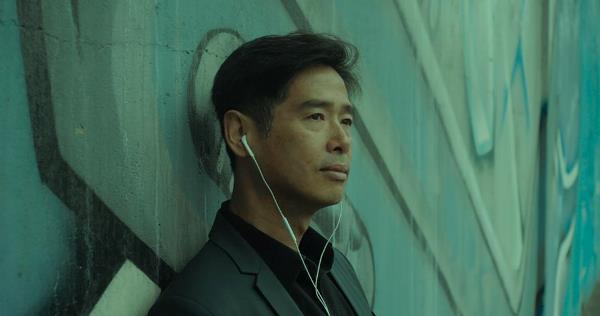
In this thoughtful-provoking documentary, four separate story lines share the same theme: the use of creativity to foster community. Director Robin McKenna’s subjects include a group of migrants who have turned an abandoned meat factory in Rome into their home as well as a communal art space, a Native American chief planning a once-in-a-lifetime giveaway of his accumulated wealth in accordance to the tribal culture, and a honeybee enthusiast translating her passion into machine building. Those profiled also include artist Lee Mingwei, whose motif throughout his career has been offering small moments of beauty to the unsuspecting.
All four subjects have invested a considerable amount of thought, time, and other personal resources into works that have a built-in expiration date, and this dichotomy is not lost on any of them. Through the extensive use of voice-over, each expresses anxiety that their gift to the world will ultimately fall on deaf ears. The aforementioned chief, Marcus Alfred, has spent years carving impressive wooden sculptures that will be part of the impending potlatch to which he will invite all members of the Kwakwaka’wakw, but he has also spent tens of thousands of dollars on food and other perishable goods to be given away. To him, it would be a great tragedy if not many tribespeople answered his call to participate, and the fear of that happening is never far from his thoughts.
Similarly, when it comes to the Metropoliz Museum of the Other and the Elsewhere, the factory-turned-arts space in Rome, the migrants are at risk of being tossed out onto the street by the property owners, who are suing to evict the squatters. In response, the artists have created large-scale paintings all over the property in order to raise awareness of their situation. The risk of homelessness is arguably more serious than what the other subjects face, yet McKenna does not play favorites, judging all of her subjects to be as deserving of sympathy and admiration as any of the others. Cutting back and forth between them with equal time devoted to each, she draws attention to what all four principals have in common in their artistic endeavors. For example, each has a moment of self-doubt in which they could conceivably cut their losses. However, they press onward instead.
While the film starts out following the gift-givers, the second half is largely concerned with the recipients’ reactions, leading to genuinely inspiring moments. Metropoliz draws tourists who stare admiringly at the artwork and sculpture on display, which reflects the migrants’ experiences; this has positive effects on the occupants themselves, who in turn, take increasing ownership of the space. Meanwhile, the responses to Mingwei’s gifts of flowers, origami-style folded money, and invitations to be privately serenaded by opera singers are more intimate. As expected, some responses are confused or indifferent toward these gifts, but there are also times in which those who go along have a highly emotional—and appreciative—reaction.
We also see how the “gifts” help to either strengthen communal bonds or create them, and in this way, McKenna makes a convincing argument that art has the capacity to change the world for the better. All told, this is a fascinating filmic essay, but it starts out with the subjects at arm’s length, and despite the reliance on voice-over and lack of talking-head sequences, the distance never really shortens.
The film never takes the opportunity to get to know its subjects with any amount of depth. Anyone interested in Mingwei beyond his artistic philosophy may be disappointed by the complete lack of personal and autobiographical details. Similarly, we learn early on that the bee lover, Michelle “Smallfry” Lessans, is also a social worker, which seems like a unique dual existence. Unfortunately, we only see the unconventional half of it.
In addition, the coda does not provide any kind of update on the lawsuit surrounding Metropoliz, which is a shame given how emotionally invested we become in its fate. McKenna may be comfortable with the idea that the best gifts are ephemeral in nature, but that doesn’t stop us from desiring some sort of closure. Even in passing, people and their situations make impressions on us.






Leave A Comment